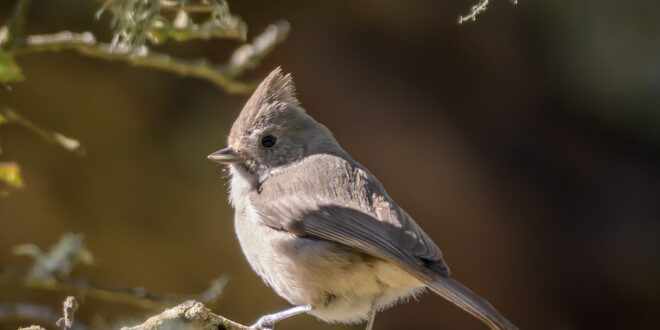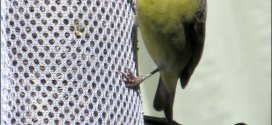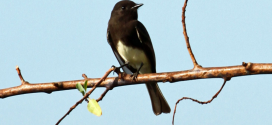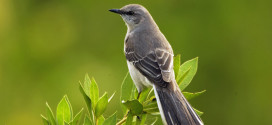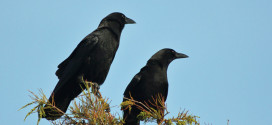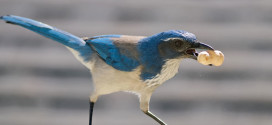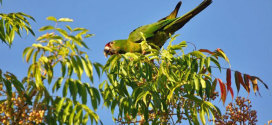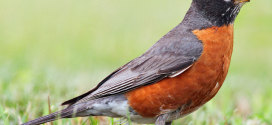As plain as a bird can be, marked only by a short crest, the Oak Titmouse (Baeolophus inornatus) nonetheless has personality. Pairs or family parties travel about the woods together, exploring the twigs for insects and calling to each other frequently.
Before Sunnyvale was Sunnyvale, the community was known as Encinal, the spanish word for Coast Live Oak. There are still many oak trees over 150 years old.
Feeding Behavior
Forages by hopping about in branches and larger twigs of trees, sometimes hanging upside down, searching for insects among the foliage and on the bark. Opens nuts and acorns by holding them with feet and pounding with bill. Comes to bird feeders for seeds or suet.
Eggs
Usually 6-7, sometimes 3-9. White, sometimes lightly dotted with reddish brown. Incubation is by female only, 14-16 days. Young: Both parents bring food to nestlings. Young leave nest about 16-21 days after hatching.
Young
Both parents bring food to nestlings. Young leave nest about 16-21 days after hatching.
Diet
Insects, nuts, seeds. Feeds mainly on insects, including many caterpillars, beetles, true bugs, leafhoppers, aphids, scale insects, and many others, as well as some spiders. Also eats acorns, weed seeds, and sometimes berries or small fruits.
Nesting
Pairs or family groups may defend territories all year. Nest site (selected by female) is usually in hole in tree, sometimes hole in stump, fence post, or pole. May be natural cavity or old woodpecker hole. In rotten wood, both members of pair may work to enlarge small cavities for their use. Also will use nest boxes, and sometimes crevices in buildings or other cavities. Nest has foundation of grass, weeds, moss, bark fibers, and lining of soft material such as feathers or animal hair.
Attribution
Becky Matsubara from El Sobrante, California, CC BY 2.0 https://creativecommons.org/licenses/by/2.0, via Wikimedia Commons
